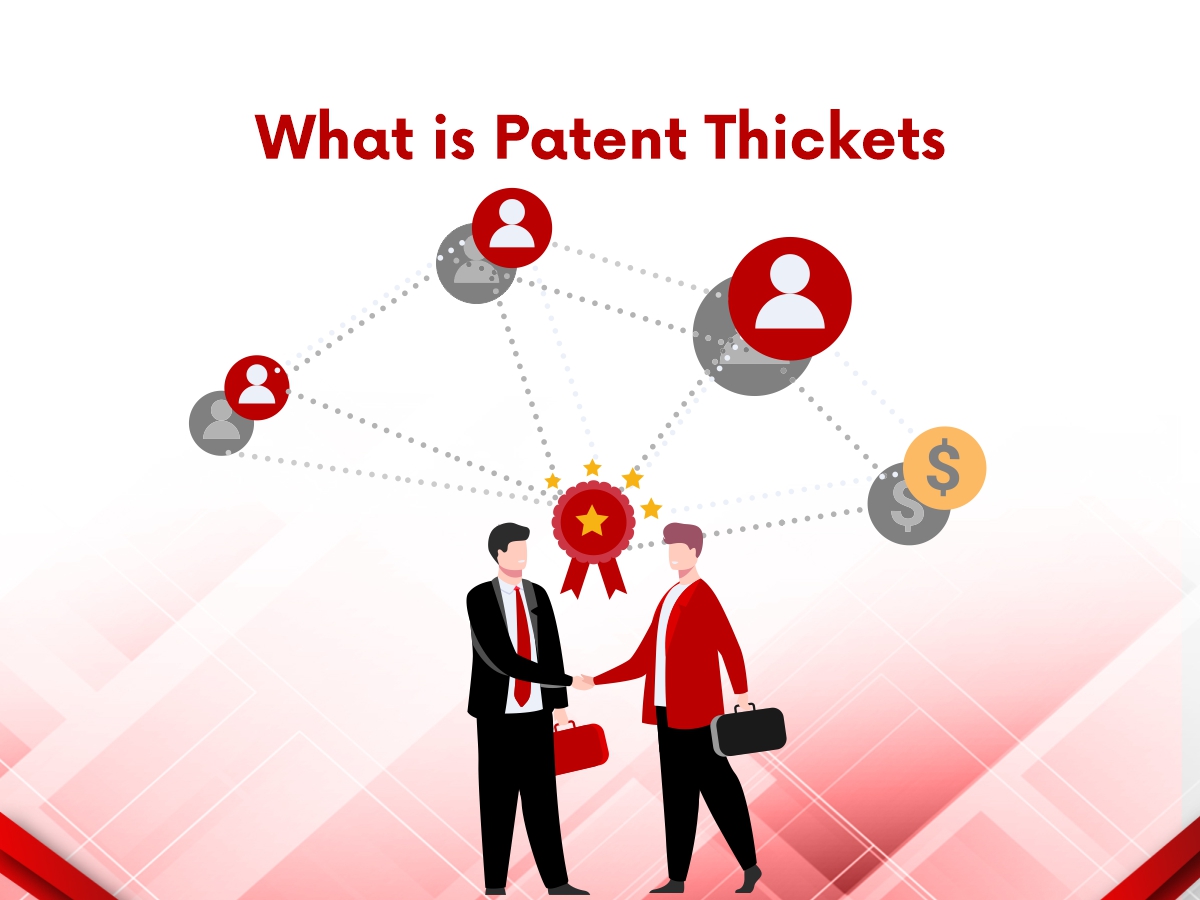
It can be defined as a network of overlapping Patents owned by many different companies. Patent thickets are also known as Patent floods or Patent clusters.
Let understand patent thicket with an example if a company want to launch a product (which made of different small components) in market it needs to take permission from all the components patent owners.
The main factors that contribute to patent thickets is increase in patent application over the past two decades. In year 2014 the USPTO received approx. 580k applications dramatic increase Patent Thicket in the patent system.
Telecom and IT industry are excellent examples of a Patent Thicket.
In March 2006, Apotex Group attempted to market generic perindopril in the UK after getting the marketing authorization. However, on August 1, Servier (which originated the perindopril erbumine compound) began proceedings against Apotex for infringement in the UK. On 7 August, Mann J was granted an interlocutory injunction restraining the importation and sale by the Apotex companies of generic perindopril erbumine in the United Kingdom.
In the Golden Rice case, Potrykus successfully managed to genetically enrich rice grains with β-carotene, the precursor to vitamin A, which gives them a yellow hue: hence, called Golden rice. Potrykus attempted to introduce the Golden Rice trait materials to local rice varieties of developing countries for further breeding.
However, a freedom-to-operate survey initially disclosed 70 patents, from 32 different companies and universities, highly involved in Golden Rice. The six key-patent owners were approached. Their final agreement permitted Potrykus to give licenses, free of charge, to developing countries, with the right to sub-license.
Toyota has filed numerous patents for its hybrid technologies. The company has a huge motive for its growing lineup of hybrid vehicles, the main goal is to increase profits by granting Patent Rights to other car manufacturers that will safeguard its fuel-savings technologies.
With the system that is initiated, it has intentionally created a strong patent thicket so that nobody can develop hybrid vehicles without compensating them.
Patent thickets are adopted to defend against competitors inventing around a single patent. It has been indicated by some that this is especially true in fields such as software or pharmaceuticals. For example, Servier defended its patent on perindopril erbumine compound product from infringement by Apotex.
Patent thicket is now being used to prohibit the entry of inventors or competitors with similar patent ideas. For example, Toyota has purposely formulated a strong patent thicket so that nobody can develop hybrid vehicles without compensating them.
Sometimes, the competitors can be charged for infringing the inventor’s patented products. For example, after a long-lasting 2012-2014 patent war between Apple and Samsung, it turned out that, a jury concluded that Samsung had to pay Apple $539 million for infringing five patents with Android phones it sold in 2010 and 2011. That was on top of the $548 million that Samsung had already paid.
Patent pools have always been deemed as the best tool to tackle the possibility of anti-competitiveness. They involve an agreement between two or more patent owners to pool their patents and license amongst themselves or to a third party on predetermined licensing conditions.
This is a mutual contract between multiple parties where each party has rights to a product, technology, research. These types of agreements are beneficial because each party grants rights to their intellectual property to the other parties.
Cross-licensing agreements normally happen between businesses that own patents over different facets of the same product. They will enter into an agreement amicably, which saves each time from prosecution associated with patent infringement conflicts.

Protecting Innovation in Fashion: Key IP Strategies Every Fashion Brand Should Implement

From Lab to Table: How Cultivated Meat is Revolutionizing the Industry?

HEVC Video Compression: Revolutionizing Digital Media

Quantum Computing: Breakthroughs, Software Innovations, and Strategic Partnerships 2025
© Copyright 2024 – Wissen Research All Rights Reserved.